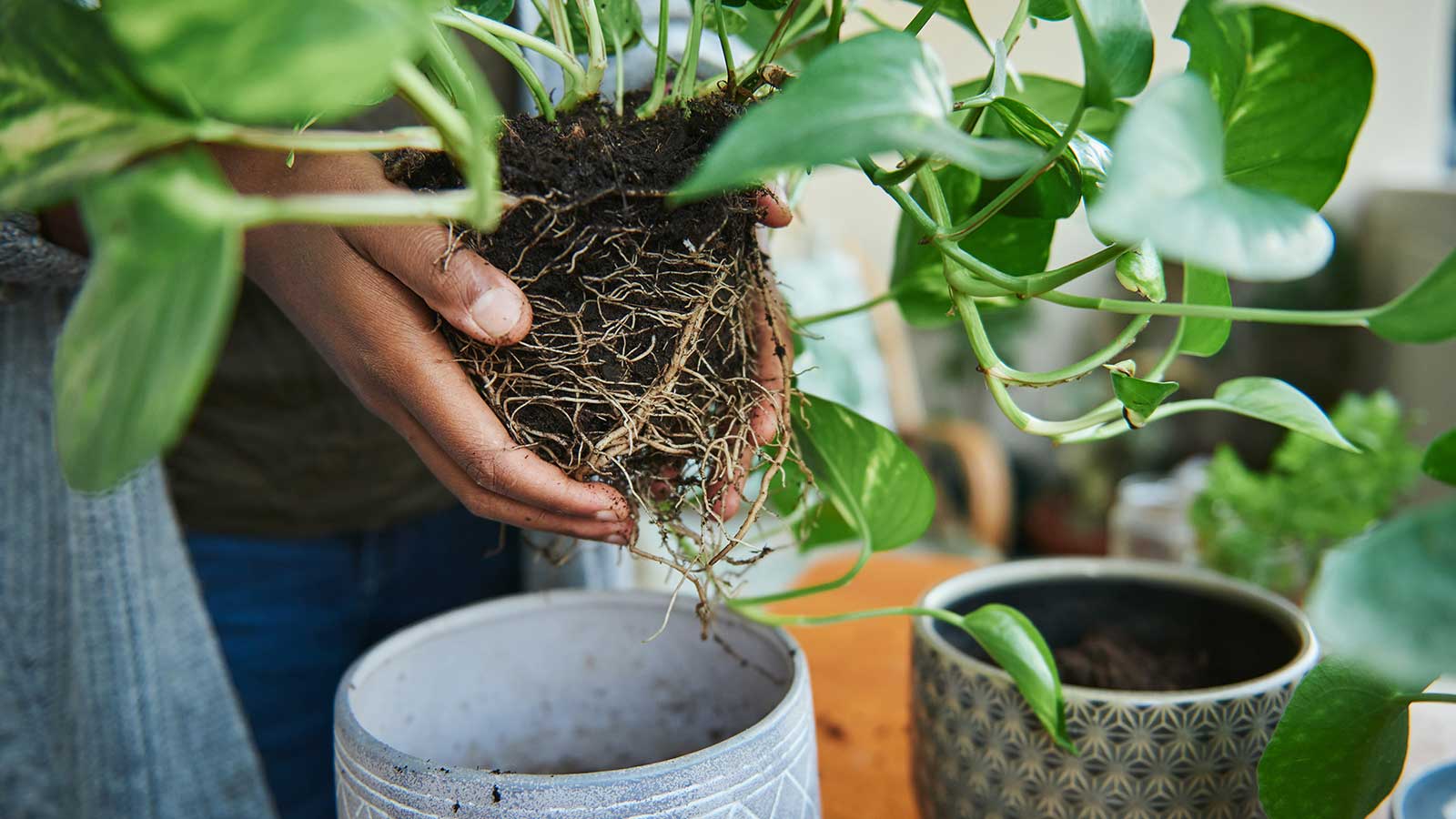
Repotting houseplants has multiple benefits, the major one being it gives them more space to grow. Otherwise, they can become congested and root-bound, making it difficult for them to absorb the nutrients and water they need.
As well as this, repotting allows the opportunity for new potting soil, which is rich in goodness and free of salt build-up from fertilizers. What's more, repotting your indoor plants gives you a chance to inspect their rootballs and remove any diseased or decaying areas. This is particularly useful if you've accidentally overwatered your plants and they're suffering from root rot as a result.
So, if you want your indoor garden to truly thrive, repotting is important. But for the best results and to reduce stress on your plants, you need to do it at the optimal time. This can vary from plant to plant, and there are some telltale signs you can look out for.
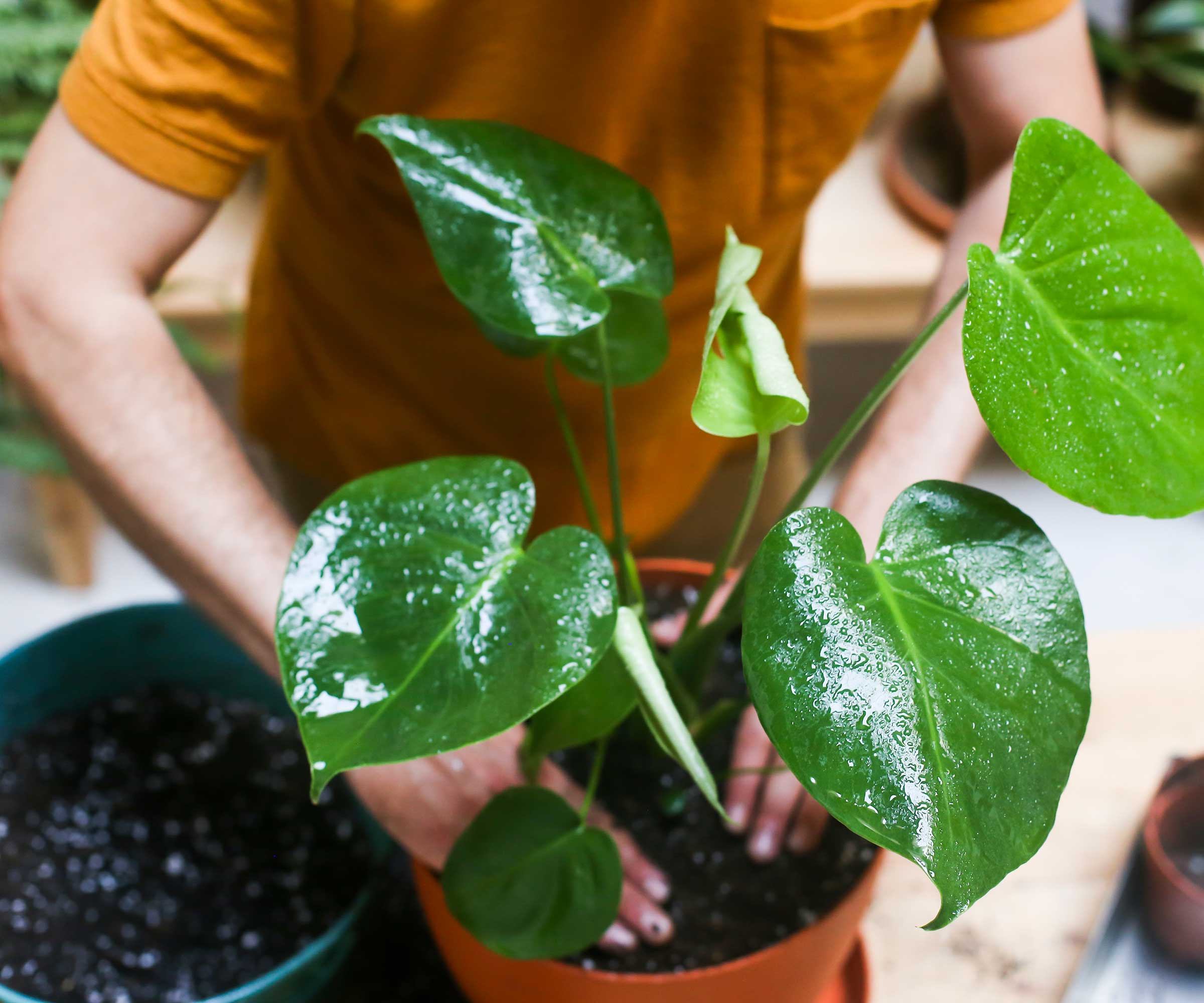
When to repot houseplants – a practical guide
Remember to size up pots gradually, advises Kiersten Rankel, a plant expert at Gregarious, Inc. 'Each new pot only needs to be about an inch wider than the previous one. Bigger pots hold more water, which can lead to root rot.'
'Use fresh potting soil to provide new nutrients and improve soil structure,' says Kayla Gajdascz of Mental Houseplants. Handle the roots carefully to minimize damage, she continues, adding to water plants after repotting. 'This helps settle the soil and reduces stress on the plant.'
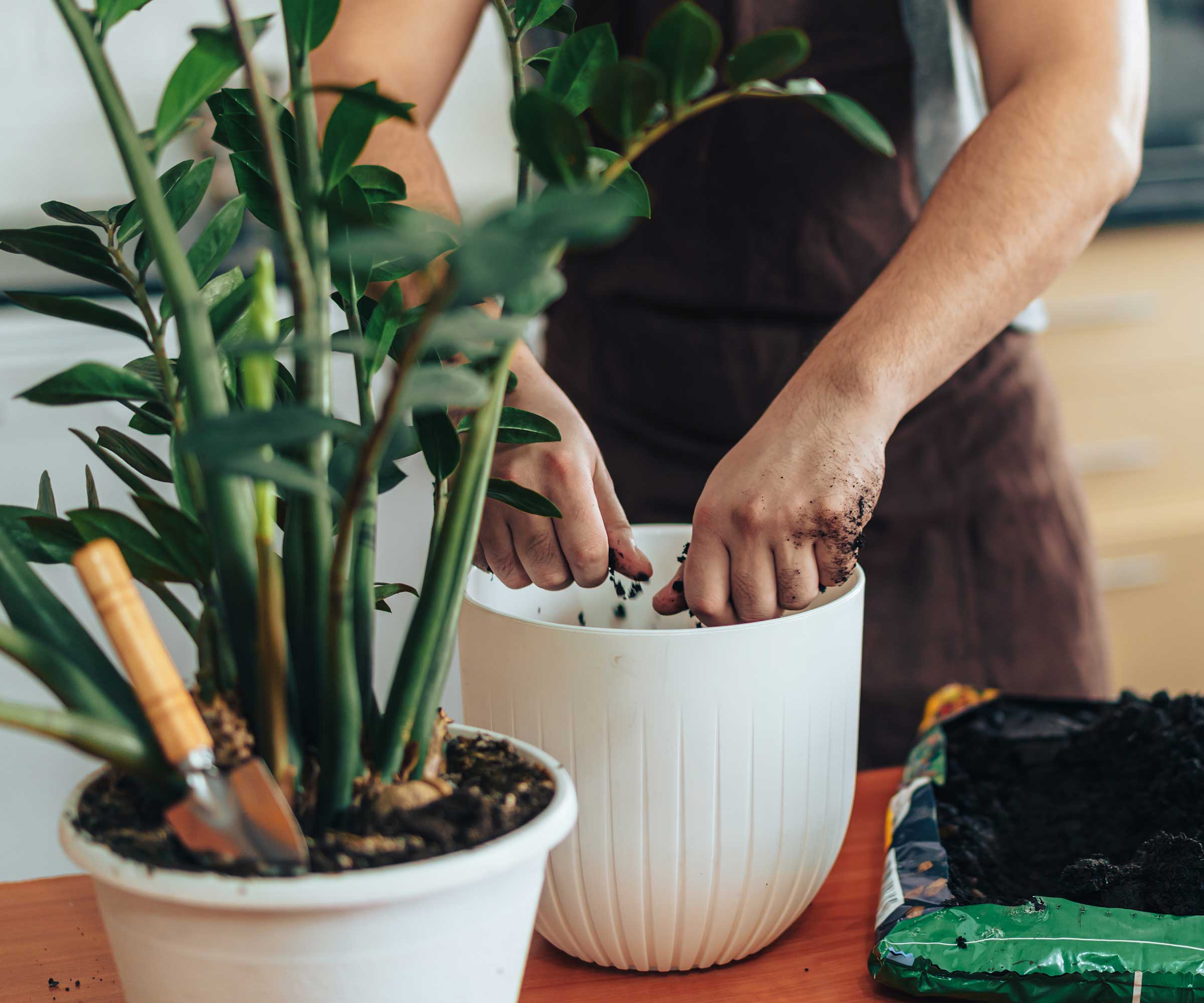
5 signs that it's time to repot your plant
The houseplant experts explain the signs to look out for:
- Visible roots: One of the easiest ways to determine whether your plant needs repotting is to check for visible roots. For instance, they may be emerging through the drainage hole, says Vladan Nikolic (Mr. Houseplant). They may also be curling at the soil surface, he adds, noting that this often happens with fiddle leaf figs.
- Dry soil: Another sign is that your plant's soil is drying out quicker than before, Vladan continues. 'If water runs straight through the pot, it may mean the plant is root-bound and the soil is compacted,' adds Kayla.
- Broken pots: 'Certain plant species, such as those with tuberous roots or those growing from rhizomes (e.g., snake plants or ZZ plants), can exert such force on pots that they become deformed or even break over time,' Vladan says. If the pot shows signs of this, it is advisable to transfer the plant to a new one.
- Top-heavy plants: 'If the plant is too big for its pot, it might tip over easily,' Kayla says. This is common with jade plants, which, over time, grow into small indoor trees.
- Stunted growth: Slower growth than usual can mean your plant might need more space, Kayla says.
Available in two sizes and colors (gray and rose), these elegant terracotta pots are handmade in Italy and include drainage holes and saucers for easy watering.
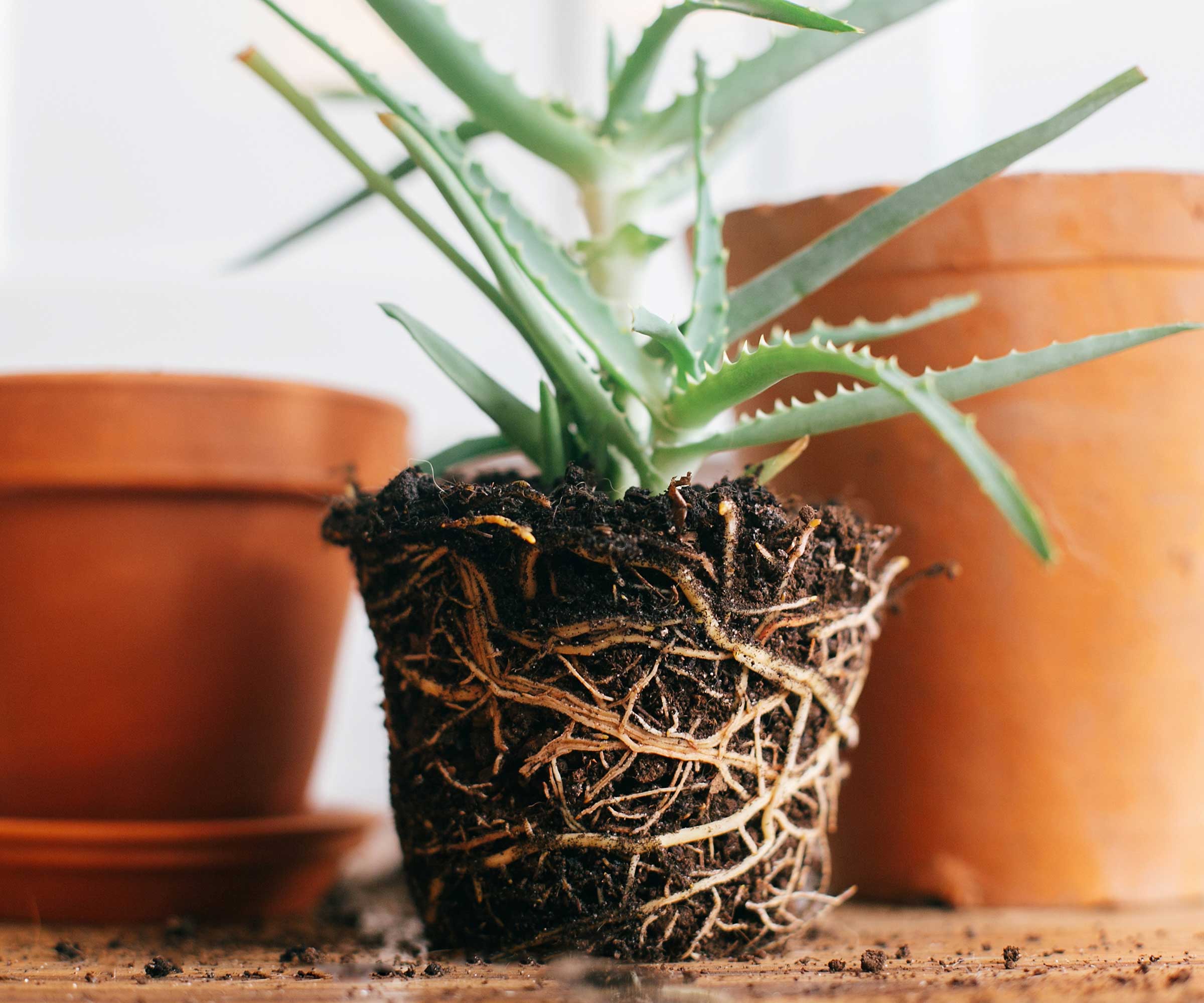
The best time of year to repot houseplants
'The best time of year to repot plants is during the spring and summer, when days are lengthening and growth is most active,' says Kiersten. 'Repotting during cold winter months can shock plants and damage roots,' she warns.
'Ideally, repot in early spring before accelerated growth occurs, allowing the plant to recover quickly and utilize the fresh soil mix.'
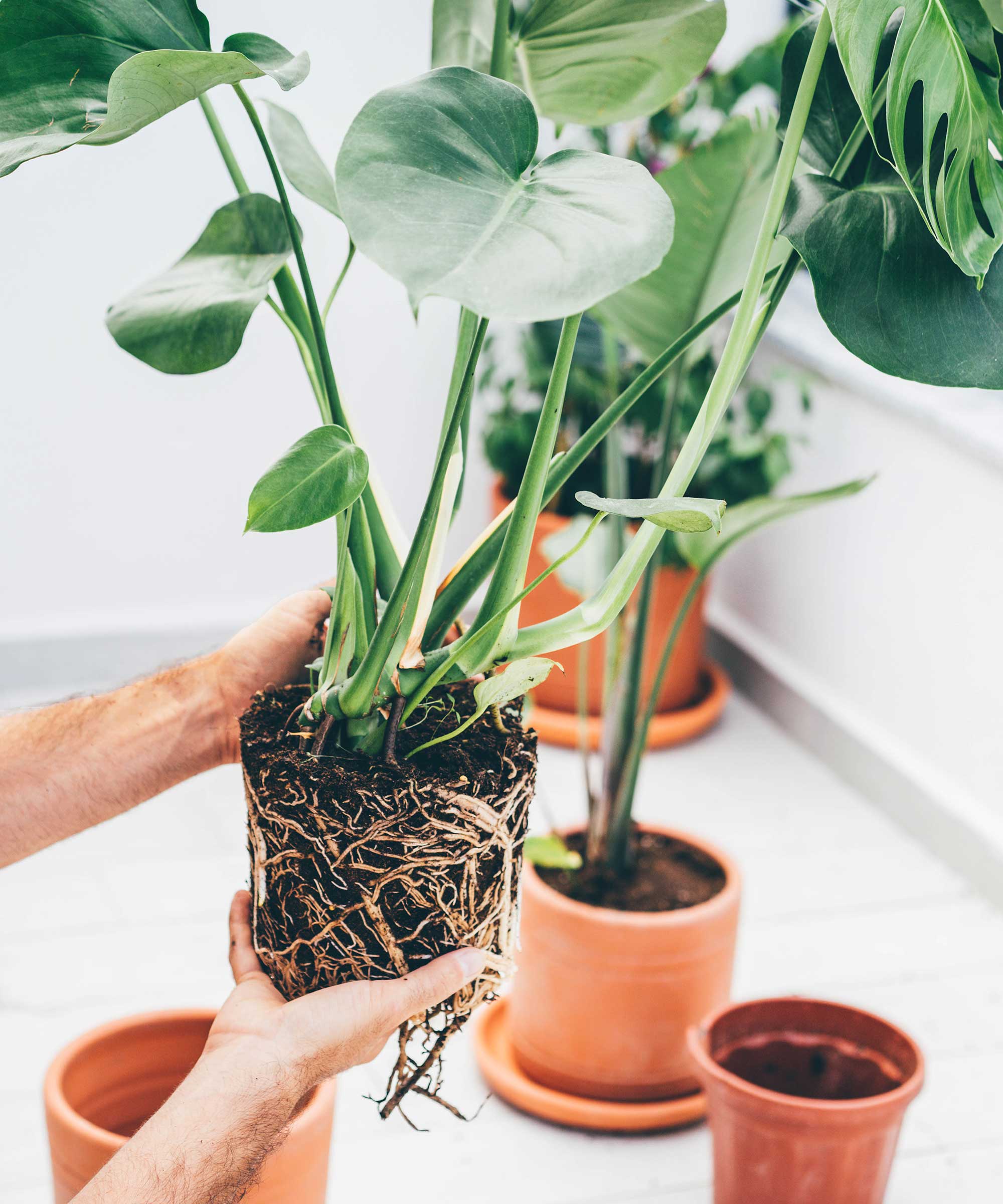
FAQs
Which houseplants need repotting often?
Vladan Nikolic says that some tropical plants, such as philodendrons and spider plants, tend to grow rapidly if they get sufficient light, with their roots outgrowing pots faster than others. 'Repotting every year may be necessary if they are getting a lot of light,' he says.
Other fast-growing examples include monsteras and majesty palms, adds plant expert Kiersten Rankel. 'They readily gain over 12in annually,' she says, recommending repotting them into fresh soil and bigger containers every 12-18 months.
Many ferns grow quickly and require regular repotting, too, highlights Kayla Gajdascz.
Which houseplants need repotting less often?
Houseplant expert Kayla Gajdascz says that cacti and succulents prefer a snug pot and don't require frequent repotting. 'Repotting every two to three years is usually sufficient,' says Vladan Nikolic.
Other examples include snake plants. They are known for their resilience and ability to tolerate being root-bound, says Vladan. 'They are fine with repotting every two to three years.'
ZZ plants, too, can be repotted less frequently than others. They are slow-growing and can stay in the same pot for multiple years, says both Vladan and Kayla.
As well as repotting your indoor plants when needed, there are other crucial steps to helping them flourish. These include watering them properly (including when you're away on vacation), protecting them from central heating, and looking out for common houseplant pests.







